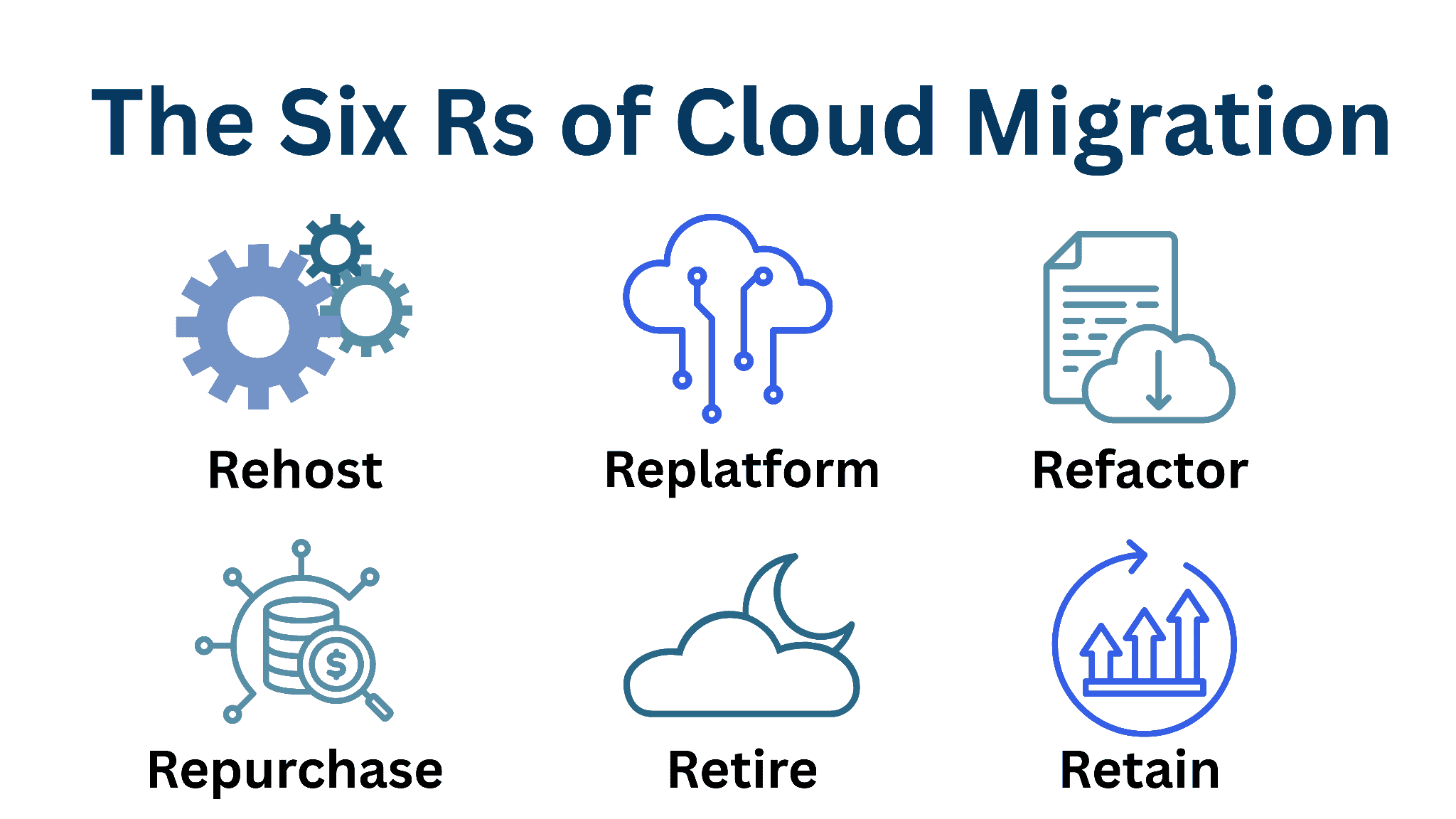What is cloud migration? It’s the process of moving digital assets—like data, applications, and IT systems—from on-premises hardware or legacy infrastructure into cloud-based environments. For businesses of all sizes and industries, cloud migration has become a critical step toward modernizing operations, improving agility, and reducing long-term costs.
But beyond the buzzwords, successful cloud migration takes more than flipping a switch. It requires careful planning, a deep understanding of your systems, and a migration strategy that fits your performance, security, and uptime needs.
| “Cloud migration should never be treated as a one-size-fits-all solution. Whether you’re running custom applications or sensitive data workloads, the key is aligning your migration with your infrastructure and business priorities.”
— Tim Timrawi, CEO of Sharktech |
In this guide, we’ll walk through what cloud migration really means, why it matters, and how to approach it in a way that supports both long-term business goals and technical realities, whether you’re moving a single app or an entire infrastructure.
What is Cloud Migration?
A widely accepted cloud migration definition is the transition of computing assets from standalone servers into more flexible, scalable cloud environments—whether public, private, or hybrid.
But a true understanding of cloud migration meaning goes beyond just changing where your systems run. It’s about how they run—and how you re-architect, optimize, or modernize existing infrastructure to perform more effectively in the cloud.
Depending on your goals, cloud migration may include:
- Moving virtual machines to cloud-hosted infrastructure
- Rebuilding applications to leverage cloud-native technologies
- Consolidating multiple data centers into a unified cloud platform
- Replacing outdated hardware with scalable, pay-as-you-go cloud services
For many organizations, migration is a critical step in modernizing IT operations, improving service delivery, and staying competitive in a digital-first world.
50% of CIOs and IT leaders report cost savings from using cloud-based applications. Beyond cost control, it’s also about gaining the agility to scale, deploy, and secure your systems with more precision and fewer limitations.
🔍 A Quick Look at the Types of Cloud Environments:
|
Cloud Migration Strategies: The 6 Rs Explained
Whether you’re migrating a single workload or your entire infrastructure, the success of cloud migration depends on aligning strategy with technical realities—and knowing what success looks like for your unique environment.
To help guide those decisions, experts use a planning model known as the 6 Rs. Each “R” represents a different way to handle an application or workload. Some are fast and simple, others involve rebuilding from the ground up.
Here’s a breakdown of the six “R”s of cloud migration strategies:
1. Rehost (Lift and Shift)
This is the fastest and most straightforward strategy. Rehosting means moving an existing application or workload to the cloud without changing its architecture. It works well for organizations that want to migrate quickly or test the cloud without a major investment in reengineering.
Best for: Simple applications, legacy systems, or short timelines.
2. Replatform (Lift, Tinker, and Shift)
Replatforming involves making small optimizations during migration. This might include switching to managed database services or resizing compute instances to better fit your needs in the cloud, without rewriting the core application.
Best for: Workloads that benefit from basic cloud features but don’t need full refactoring.
3. Refactor (Re-architect)
This strategy involves rethinking and rebuilding applications to take full advantage of cloud-native capabilities. That might include containerization, microservices, or serverless architecture. It’s a more complex process but offers long-term performance, scalability, and cost-efficiency.
Best for: Applications that need to scale dynamically or require high availability and speed.
4. Repurchase (Drop and Shop)
Repurchasing means replacing a legacy application with a new cloud-based solution, often a SaaS platform. For example, moving from an in-house CRM to a platform like Salesforce.
Best for: Organizations looking to modernize quickly or eliminate outdated tools.
5. Retire
In some cases, certain workloads or applications are no longer needed. Identifying and retiring these before migration can reduce complexity and cost.
Best for: Obsolete or redundant systems that don’t provide business value.
6. Retain
Sometimes, the right decision is to keep an application on-premises. You may delay migration due to security or operational dependencies.
Best for: Applications that are tightly integrated with local systems or not ready for cloud environments.
What Gets Moved When Migrating to the Cloud?
60% of the world’s corporate data is stored in the cloud. Cloud migration involves more than simply relocating files. In most cases, it requires moving entire systems, applications, and resources that support day-to-day operations.
Here are the most common components involved in cloud migrations:
1. Applications
These are often the primary targets for migration. Some are lifted and shifted with minimal changes, while others are redesigned to take advantage of cloud-native tools. This includes web apps, enterprise software, and internal tools your teams rely on.
2. Databases
Moving databases requires careful consideration of compatibility, performance, and data integrity. You may migrate a full relational database, opt for a cloud-native database service, or even restructure how data is stored.
3. Storage Systems
Organizations often migrate block storage, file storage, and object storage systems. This includes backups, archives, media files, and shared drives. Migrating storage to the cloud can improve availability and simplify access across distributed teams.
4. Virtual Machines and Servers
Infrastructure-level resources like virtual machines, bare-metal servers, and containers can be moved to cloud environments with the right strategy. These often support larger applications or legacy systems that aren’t easily rebuilt.
5. Workloads and Services
These include background processes, analytics pipelines, scheduled tasks, and batch processing systems. Migrating workloads to the cloud gives organizations more flexibility in scaling compute resources as needed.
6. Security Configurations and Networking
Firewalls, load balancers, VPNs, DNS records, and access controls may also need to be reconfigured or rebuilt in the cloud. This part of the migration is often overlooked but is essential to maintaining performance and protection.
Learn more about cloud management: |
Who Handles Cloud Migrations?
Once a company decides to migrate to the cloud, the next question is who actually manages the move? While some organizations have internal IT teams equipped to handle migration planning and execution, others choose to partner with third-party providers who specialize in infrastructure design, data transfer, and post-migration support.
In-House IT Teams
Larger companies with experienced technical staff may choose to manage migration internally. This approach offers more control, but also requires deep knowledge of networking, virtualization, and cloud architecture.
Managed Service Providers (MSPs)
Many businesses work with MSPs who oversee everything from assessment to execution. This option is especially useful for companies without cloud migration expertise or those looking to minimize risk during the transition.
Cloud Hosting Providers
Some hosting providers offer tailored migration support, helping businesses move workloads into purpose-built cloud environments. These partnerships often provide better alignment between infrastructure performance and long-term hosting needs.
Migrating to the Cloud? Start with Sharktech
Migrating to the cloud can unlock real advantages, from better performance to easier scaling, but success depends on choosing the right environment and the right support team.
Sharktech offers cloud migration services designed specifically for businesses moving into our infrastructure. That means no generic solutions, no vendor juggling—just direct, experienced support from a provider that understands high-performance cloud hosting.
Whether you’re shifting a few systems or preparing for a larger infrastructure move, Sharktech provides the migration tools and technical guidance to help you make the transition with confidence.
When performance, control, and uptime matter, moving to a purpose-built cloud like Sharktech’s is a smart next step. Contact us today to learn more.





More to Read
The OpenStack Public Cloud Complexity Problem (And Why It’s Costing You)
Choosing the right cloud platform today is akin to trying to pick a needle
Oct
Make Growth and Security Part of Your Public Cloud Management Strategy
Managing today’s cloud infrastructure is no longer just about spinning up servers or
Sep
Leading Cloud Service Providers Explained: Types, Benefits, and How to Choose
94% of businesses now use a cloud solution in some form. Whether it’s
Aug
What is Public Cloud? A Simple Guide For Businesses
What is public cloud? It’s a model of cloud computing where infrastructure and
Jul
What is Cloud Migration? A Practical Guide for Modern Businesses
What is cloud migration? It’s the process of moving digital assets—like data, applications,
Jul
Why Some Businesses Choose Self-Managed Cloud Instead
Cloud computing has revolutionized how businesses deploy, manage, and scale their digital infrastructure.
Apr